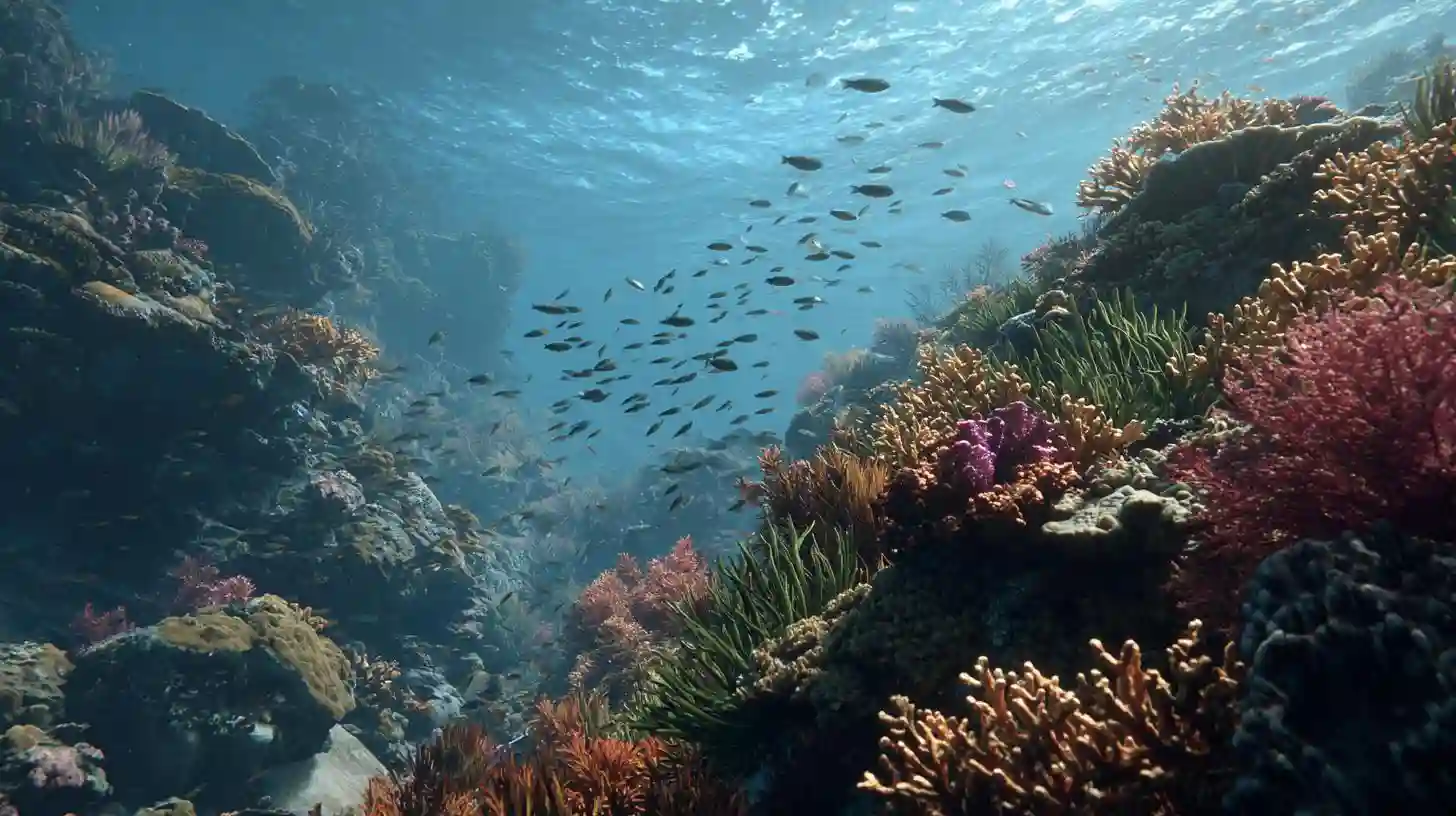
Reefs around islands are among the most extraordinary natural wonders on Earth. These underwater ecosystems are a kaleidoscope of colors, teeming with life, and host to some of the most intricate and diverse habitats found in the world’s oceans. They are not just beautiful to look at, but they play essential roles in maintaining the balance of marine environments, providing shelter, food, and breeding grounds for countless species. Whether it is the vibrant coral gardens of the Caribbean, the mysterious underwater labyrinths of the Pacific, or the flourishing coral colonies of the Indian Ocean, each reef holds a unique charm and significance in the world of marine biology.
One of the most famous examples is the Great Barrier Reef off the coast of Australia. This massive structure is not only the largest coral reef system in the world, but it also acts as a critical protective barrier against the destructive power of waves, reducing the impact of storms on the islands and mainland. The Great Barrier Reef spans an immense area, where the waters are home to thousands of species of fish, corals, mollusks, and even rare creatures like the dugong. Snorkelers and divers flock to this natural wonder to experience the striking diversity of marine life, where schools of vibrant parrotfish dart through the water, and sea turtles glide serenely along the coral beds. The reef also holds immense ecological value as it supports critical research in marine science, serving as a model for understanding the complexities of ocean ecosystems.
In the Indian Ocean, another magnificent reef system can be found surrounding the islands of the Maldives. This chain of islands is known for its crystal-clear waters, perfect visibility for underwater exploration, and a rich diversity of marine life. The coral reefs here are incredibly well-preserved, largely due to the efforts of the local communities and conservation organizations. The Maldives reefs support a wealth of fish species, from tiny clownfish hiding among anemones to graceful manta rays sweeping through the deep blue waters. The vibrant coral formations in these reefs are home to a vast array of creatures that form complex food webs. Divers visiting these reefs are often treated to unforgettable encounters with sharks, turtles, and schools of vibrant tropical fish, making it one of the most sought-after diving destinations in the world.
Farther across the Pacific Ocean, the islands of Palau boast another extraordinary reef system that draws the attention of marine enthusiasts from all over the globe. Palau’s reefs are known for their dramatic underwater landscapes, including vertical walls that drop into deep blue abyssal waters, and expansive lagoons filled with coral heads. The reefs here are rich with biodiversity, offering shelter to numerous species of fish, invertebrates, and larger marine animals like the elusive jellyfish and barracuda. What makes Palau particularly remarkable is the unique phenomenon of Jellyfish Lake, a marine lake where millions of golden jellyfish migrate daily, gently pulsating through the water in mesmerizing formations. This surreal sight is a prime example of how isolated ecosystems can evolve and become home to species that thrive in extraordinary conditions.
The reefs around the Galapagos Islands, situated in the Pacific Ocean off the coast of Ecuador, are another treasure trove of marine diversity. These reefs have been designated as a UNESCO World Heritage site due to their ecological significance and the variety of endemic species found within. The Galapagos archipelago is an ecological laboratory, with its reefs providing sanctuary for species that have adapted uniquely to the islands’ remote location. Here, divers have the rare opportunity to swim with marine iguanas, sea lions, and schools of hammerhead sharks. The reefs are also home to some of the most pristine coral formations left on the planet, with waters that are rich in nutrients, making them a hotspot for marine life. These underwater communities are dynamic, shifting and evolving over time, adapting to the pressures of climate change, pollution, and human activity. Efforts to preserve the reefs of the Galapagos are critical in maintaining their status as one of the world’s most important marine ecosystems.
In the Caribbean, the reefs surrounding the islands of Bonaire and Curaçao are some of the healthiest and most intact in the region. The clear waters and relatively undisturbed environments here have allowed the coral colonies to thrive. These reefs are home to an impressive variety of marine life, including colorful reef fish, spiny lobsters, and rays, as well as a large population of endangered species such as sea turtles. Bonaire, in particular, has been a leader in marine conservation, with strict policies in place to protect the reefs from overfishing and development. This has allowed the coral to recover and flourish, making it a prime destination for both divers and marine researchers. The vibrant coral gardens and shallow waters are ideal for beginner divers, while the deeper walls attract experienced explorers seeking to witness some of the most untouched underwater landscapes.
As the world faces growing threats from climate change, pollution, and overfishing, these incredible reefs stand as both treasures and warnings. They are delicate systems that need careful protection to ensure that future generations can experience their beauty and ecological importance. The reefs around islands are not just remarkable for their natural beauty, but they are also crucial to the health of the oceans, supporting biodiversity, protecting coastlines, and providing livelihoods for millions of people. Exploring these underwater wonderlands offers a glimpse into the intricate and interconnected world beneath the waves, a world that continues to amaze and inspire those fortunate enough to witness it.